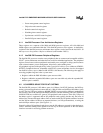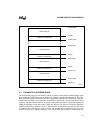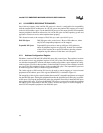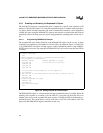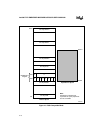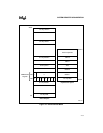
Intel386™ EX EMBEDDED MICROPROCESSOR USER’S MANUAL
4-6
4.5 I/O ADDRESS DECODING TECHNIQUES
One of the key features of the Intel386 EX processor is that it is configurable for compatibility
with the standard PC/AT architecture. In a PC/AT system, the platform I/O resources are located
in the slot 0 I/O address space. For the Intel386 EX processor, this means that PC/AT-compatible
internal peripherals should be reflected in slot 0 of the I/O space for DOS operating system and
application software to access and manipulate them properly.
This discussion leads to the concepts of DOS I/O space and expanded I/O space.
DOS I/O Space DOS I/O space refers to the lower 1 Kbyte of I/O addresses, where
only PC/AT-compatible peripherals can be mapped.
Expanded I/O Space Expanded I/O space refers to the top 4 Kbytes of I/O addresses,
where all peripheral registers are physically located. The remainder
of this section explains how special I/O address decoding schemes
manipulate register addresses within these two I/O spaces.
4.5.1 Address Configuration Register
I/O address locations 22H and 23H in DOS I/O space offer a special case. These address locations
are not used to access any peripheral registers in a PC/AT system. The Intel386 SL microproces-
sor and other integrated PC solutions use them to enable extra address space required for config-
uration registers specific to these products. On the Intel386 EX processor, these address locations
are used to hide the peripheral registers in the expanded I/O space. The expanded I/O space can
be enabled (registers visible) or disabled (registers hidden).
The 16-bit register at I/O location 22H can also be used to control mapping of various internal
peripherals in I/O address space. This register, REMAPCFG, is defined in Figure 4-3.
The remap bits of this register control whether the internal PC compatible peripherals are mapped
into the DOS I/O space. Setting the peripheral bit makes the peripheral accessible only in expand-
ed I/O space. Clearing the peripheral bit makes the peripheral accessible in both DOS I/O space
and expanded I/O space. To access the REMAPCFG register, you must first enable the expanded
I/O address space as described in the next section. At reset, this register is cleared, mapping in-
ternal PC/AT-compatible peripherals into DOS I/O space.







